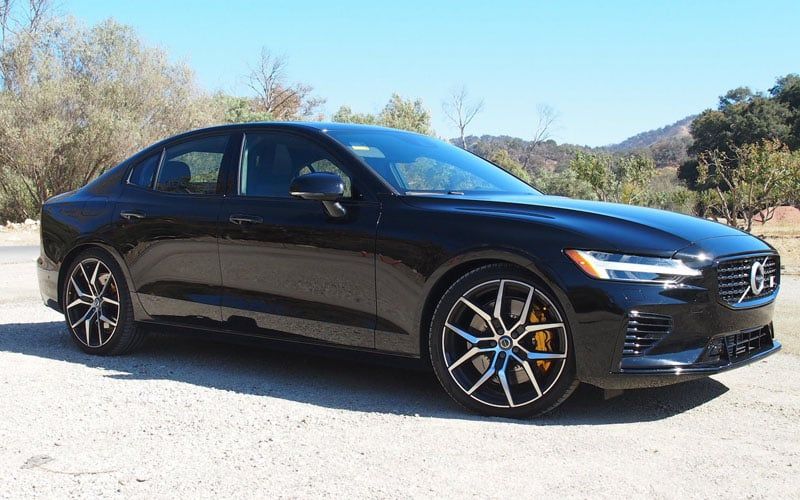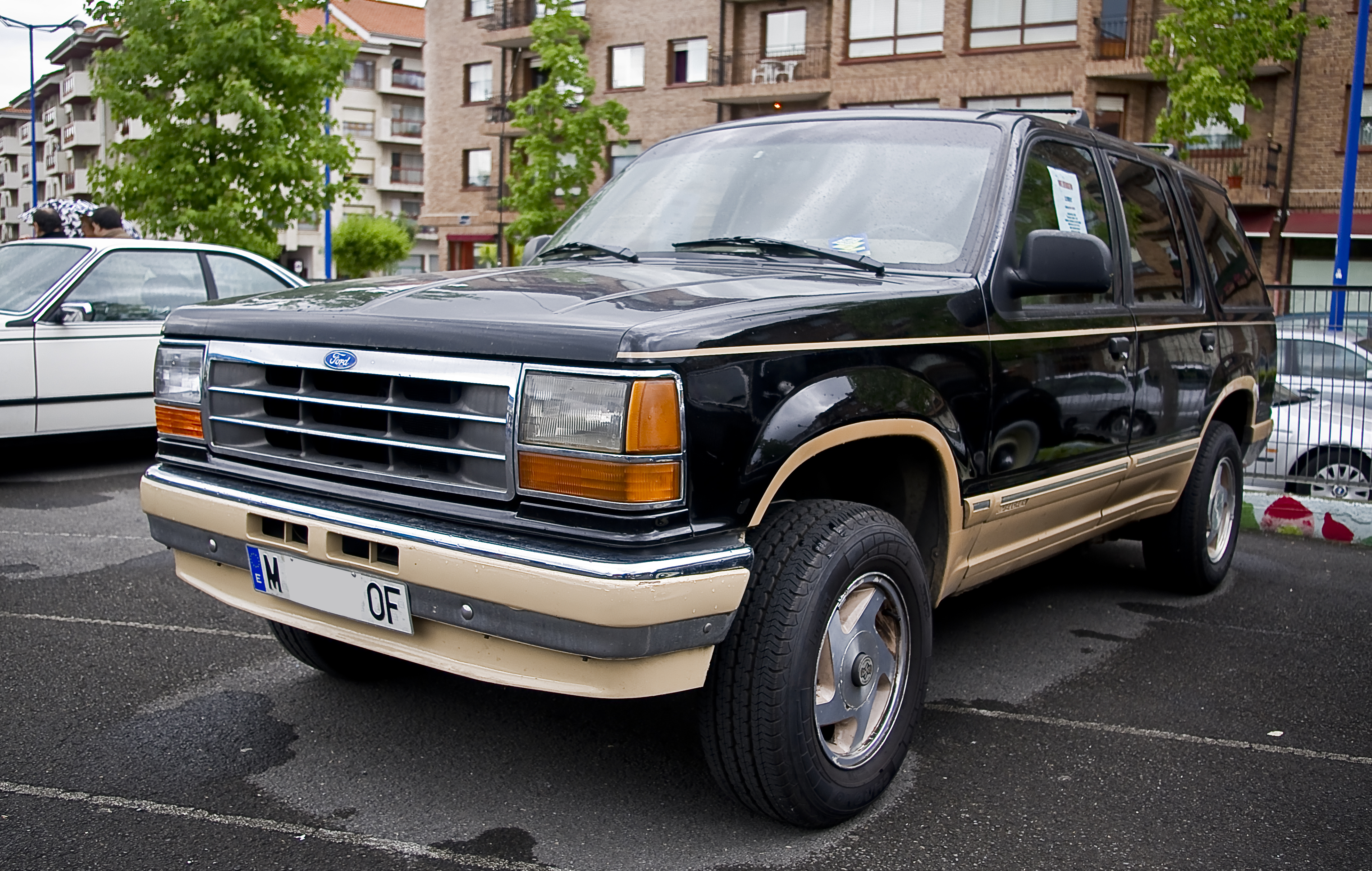
The 1940s presented a unique and challenging chapter in automotive history. For a significant portion of the decade, the gears of civilian car manufacturing ground to a halt, as factories across the globe pivoted their immense capabilities to support the vital war effort. Yet, from this crucible of necessity and innovation, a remarkable generation of automobiles emerged, cars that didn’t just meet the demands of their era but transcended them with an undeniable presence and an enduring allure that still captivates us today.
These vehicles weren’t engineered for fleeting trends or ostentatious displays. Instead, they were meticulously crafted with an intrinsic sense of style, a commitment to comfort, and just the right amount of inherent power. They were built for purpose, yet imbued with a quiet confidence that allowed them to carry themselves with an elegance that continues to resonate. Even now, decades later, they possess a captivating charm, a silent authority that effortlessly makes people pause and take notice.
So, prepare to embark on a fascinating journey through a transformative era. We’re about to dive into the world of some truly remarkable machines – cars that are far more than mere relics of the past. These are rolling pieces of history, each telling a story of post-war optimism, engineering prowess, and design foresight. They are, quite simply, models that continue to turn heads, proving that true automotive brilliance is, indeed, timeless.
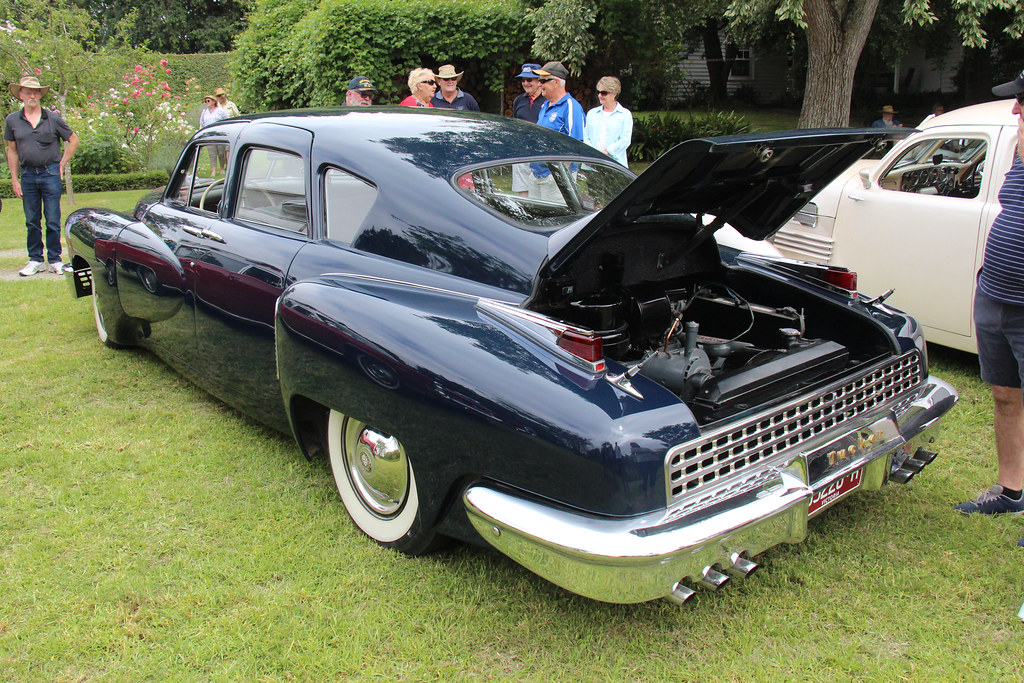
1. **1948 Tucker 48**The Tucker 48 might have had a fleeting existence, with only 51 units ever leaving the assembly line, but its impact on automotive history is anything but small. This car was a bold vision brought to life, packing an array of features that were astonishingly ahead of their time, particularly for a vehicle born in the late 1940s. It boasted a rear-mounted flat-six engine, a revolutionary center headlight designed to turn with the steering wheel, and perhaps most notably, seat belts—a safety feature most manufacturers wouldn’t consider standard for decades.
Under the hood, its engine delivered a respectable 166 horsepower, a solid figure for a full-size sedan during that period. However, the true show-stopping quality of the Tucker 48 today lies in its extreme rarity and its strikingly sleek, almost jet-inspired styling. Spotting one of these magnificent machines in person isn’t just seeing a car; it’s like catching a tangible glimpse of what could have been a vastly different automotive future.
Today, the few surviving Tuckers are not merely collector’s items; they are automotive legends, commanding millions at auction. Their story, intertwined with controversy and a visionary entrepreneur, was even immortalized in Francis Ford Coppola’s film, “Tucker: The Man and His Dream,” further cementing its place as an icon of unfulfilled potential and enduring innovation.
Read more about: Unlock Huge Savings: 15 Costco Car Rental Secrets You Didn’t Know
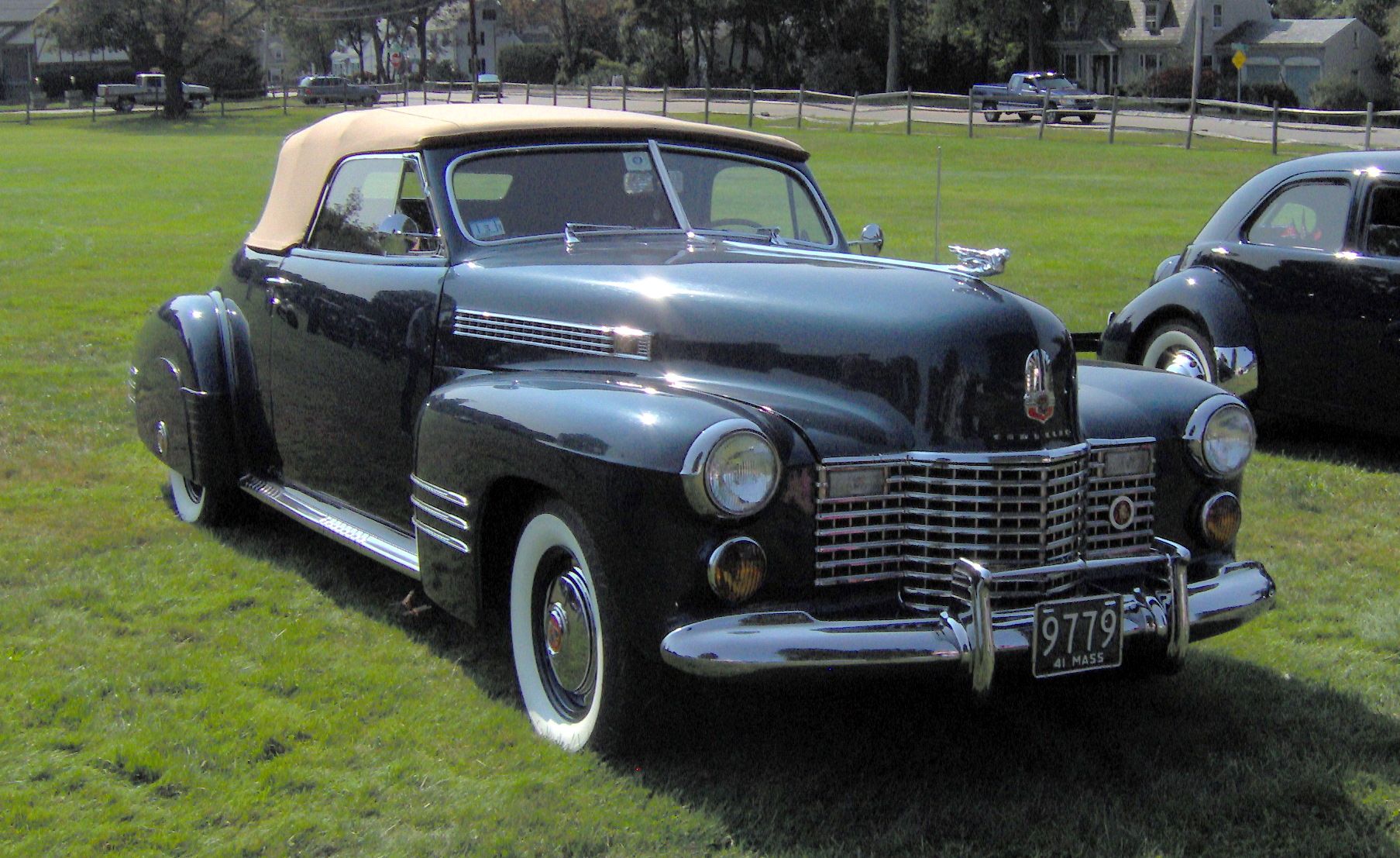
2. **1941 Cadillac Series 62 Convertible**Before the post-war automotive boom truly took hold, the 1941 Cadillac Series 62 Convertible already epitomized the long, low, and luxurious aesthetic that Cadillac would become synonymous with. This elegant cruiser came equipped with a robust 346 cubic inch V8 engine, producing a smooth 150 horsepower—more than ample power to allow it to glide along the highways with an undeniable sense of confidence and poise.
Its design was a masterpiece of classic American automotive styling, featuring beautifully smooth curves, expansive wide fenders, and just the right amount of gleaming chrome to exude sophistication without being gaudy. With its top gracefully folded down, it still radiates an unparalleled sense of class and coolness, instantly transporting onlookers to a bygone era of open-road freedom and refined travel.
Even today, a meticulously maintained Series 62 convertible parked at a classic car cruise-in unfailingly draws a large crowd. People instinctively recognize that they are in the presence of something truly special—a car that embodies the optimism and burgeoning prosperity of pre-war America, offering a driving experience that still feels distinctively luxurious and commanding, akin to floating down the road in a grand land yacht.
Car Model Information: 2024 Acura RDX Base
Caption: 1963 Cadillac Series Sixty-Two Convertible
Name: Cadillac Series 62
Manufacturer: Cadillac
Production: 1940–1942,1946–1964
Predecessor: Cadillac Series 61,Cadillac Series 65
Layout: Front-engine, rear-wheel-drive layout
Assembly: Detroit Assembly,Detroit, Michigan
Successor: Cadillac Calais,Cadillac de Ville series#Third generation (1965–1970)
Class: Full-size,Luxury vehicle#High-end luxury.2Ffull-size luxury cars
Categories: 1950s cars, 1960s cars, Articles with short description, Cadillac vehicles, Cars discontinued in 1964
Summary: The Cadillac Series 40-62 is a series of cars which was produced by Cadillac from 1940 through 1964. Originally designed to complement the entry level Series 61, it became the Cadillac Series 6200 in 1959, and remained that until it was renamed to Cadillac Calais for the 1965 model year. The Series 62 was also marketed as the Sixty-Two and the Series Sixty-Two. The Series 62 was used to introduce the Cadillac Coupe de Ville and the Cadillac Eldorado which started out as special appearance packages that were later placed into production.
Get more information about: Cadillac Series 62
Buying a high-performing used car >>>
Brand: Cadillac Model: Series 62 Convertible
Price: $45,000 Mileage: 6,140 mi.
Read more about: From Fins to Muscle: Tracing GM’s Most Legendary Automotive Icons
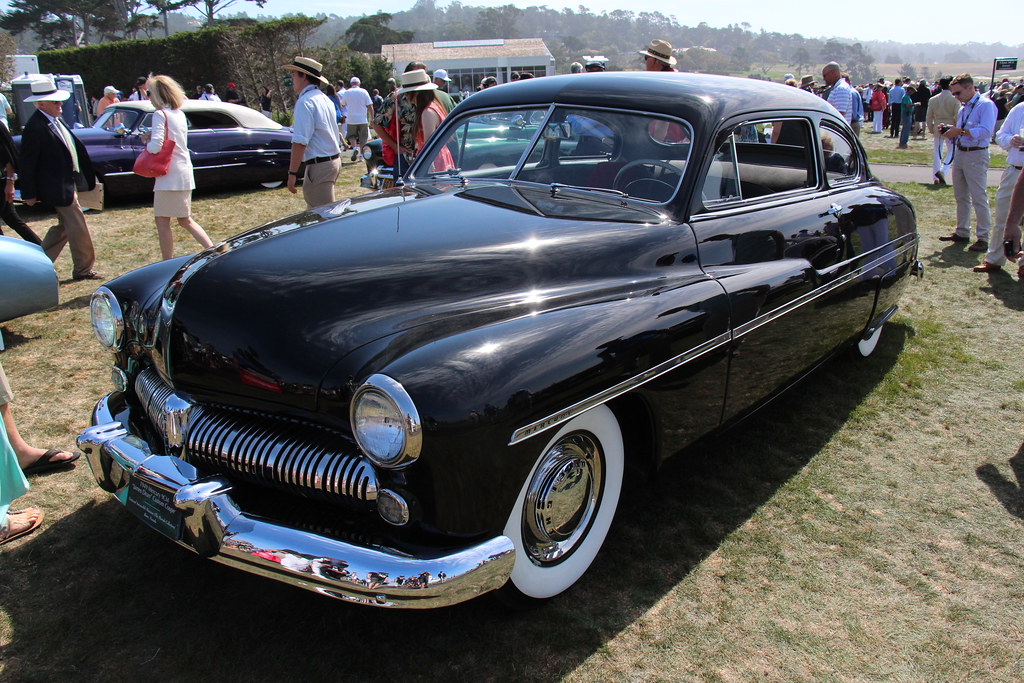
3. **1949 Mercury Eight Coupe**The 1949 Mercury Eight Coupe holds a truly iconic status within the custom car world, earning its place as a veritable staple for hot rodders and customizers alike. While its 255 cubic inch flathead V8 engine, putting out 110 horsepower, might not sound extraordinary on paper by modern standards, the car’s inherent style is where it truly shines, particularly when its lines are enhanced through the art of chopping and lowering.
Hot rodders quickly adopted this car in the 1950s, drawn to its robust frame and adaptable design. Yet, even in its pristine, stock form, the Mercury Eight possesses that unmistakable gangster-era profile that continues to command attention and draw admiring glances. Its smooth body lines and that distinctive, instantly recognizable grille collectively contribute to its enduring appeal, making it one of the most identifiable rides to emerge from the decade.
This Mercury became even more famous thanks to James Dean’s unforgettable appearance with a chopped version in “Rebel Without a Cause,” which further cemented its legendary status. The culture of custom cars truly embraced this model, transforming it with lowered stances, channeled bodies, and vibrant flame paint jobs. Genuine survivors in original condition are becoming increasingly rare, making unmodified examples particularly valuable to collectors who seek a pure automotive time capsule.
Car Model Information: 2024 Acura RDX Base
Caption: 1939 Mercury 8 two-door Sedan
Manufacturer: Mercury (automobile)
Production: 1939–1951
Assembly: Main plant:{{ubl,item_style=margin-left:1.5em,Dearborn, Michigan,Wayne, Michigan
Layout: FR layout
Class: Full-size
Name: Mercury Eight
Successor: Mercury Monterey,Mercury Custom
Categories: 1940s cars, 1950s cars, All articles with unsourced statements, Articles with short description, Articles with unsourced statements from September 2017
Summary: The Mercury Eight is an automobile that was produced by the American manufacturer Ford Motor Company under their now defunct division Mercury between 1939 and 1951. The debut model line of the Mercury division, Ford positioned the full-size Mercury Eight between the Ford Deluxe (later Custom) model lines and the Lincoln. In total, Ford assembled three generations of the Eight (before and after World War II).
During its production, the Eight offered a full range of body styles, including coupes, sedans, convertibles, and station wagons. For its first generation, the Eight was produced with its own body, adapting its own version of a Ford body for its second generation; for the third generation, the Eight shared its body with the Lincoln.
For the 1952 model year, Ford expanded its namesake division to three nameplates and Lincoln and Mercury to two each, with Mercury replacing the Eight with Monterey (introduced in 1950 as a trim option), lasting until 1974.
Get more information about: Mercury Eight
Buying a high-performing used car >>>
Brand: Mercury Model: Eight Coupe
Price: $45,000 Mileage: 6,140 mi.
Read more about: The End of the Road: 17 Unforgettable Cars That Were Discontinued

4. **1940 Ford Deluxe Coupe**The 1940 Ford Deluxe Coupe holds a significant place in history as the very last pre-war Ford model to roll off the assembly line before civilian production was halted entirely. Equipped with a reliable flathead V8 engine that produced 85 horsepower, this car was never primarily about raw speed. Instead, its true genius lay in its sleek design and the harmonious balance of its proportions, creating a vehicle that was both aesthetically pleasing and remarkably versatile.
Its design features, such as the distinctive teardrop headlights and gracefully flowing fenders, conspired to give it a timeless shape that remains appealing to this day. It’s no surprise that hot rodders utterly adored this model, with countless examples eventually finding their way onto drag strips, modified to push the boundaries of performance. Even in bone-stock condition, however, it remains an undeniably handsome car that has, quite simply, never ceased to be cool.
Often hailed as the “perfect hot rod canvas,” the 1940 Ford Deluxe Coupe served as the foundational blueprint for a significant portion of hot rod culture. Unlike many of its contemporaries, these Fords maintained excellent visibility through their signature split windshield design. Finding an original example today that hasn’t been extensively modified is a rare feat, making such automotive time capsules highly prized by discerning collectors.
Car Model Information: 2021 Porsche Cayenne Base
Caption: 1932 Ford Model B Standard Tudor 2-door sedan
Name: 1932 Ford Model B
Manufacturer: Ford Motor Company
Production: 1932–1934
Predecessor: Ford Model A (1927–1931)
Successor: Ford Model 48
Class: Full-size Ford
BodyStyle: phaeton body,Pickup truck
Engine: 201 cuin
Abbr: on
transmission: Non-synchronous transmission,Manual transmission
Wheelbase: 2692 mm
Disp: flip
Layout: FR layout
Assembly: see list below
Related: Ford Model Y,Ford Köln,Ford Rheinland,GAZ-M1
Designer: Edsel Ford
Categories: 1930s cars, All articles needing additional references, All articles with unsourced statements, Articles needing additional references from January 2021, Articles with short description
Summary: The term 1932 Ford may refer to three models of automobile produced by Ford Motors between 1932 and 1934: the Model B, the Model 18, and the Model 40. These succeeded the Model A. The Model B had an updated four-cylinder engine and was available from 1932 to 1934. The Model 18 was the first Ford fitted with the flathead V-8, and it was available in the Model 40 too in 1933 and 1934. The company also replaced the Model AA truck with the Model BB, available with either the four- or eight-cylinder engine.
The three car models were replaced by the streamlined Model 48 in 1935.
Get more information about: 1932 Ford
Buying a high-performing used car >>>
Brand: Ford Model: Deluxe Coupe
Price: $45,188 Mileage: 67,956 mi.
Read more about: Revolutionary Rides: The 1930s Cars That Changed Driving Forever
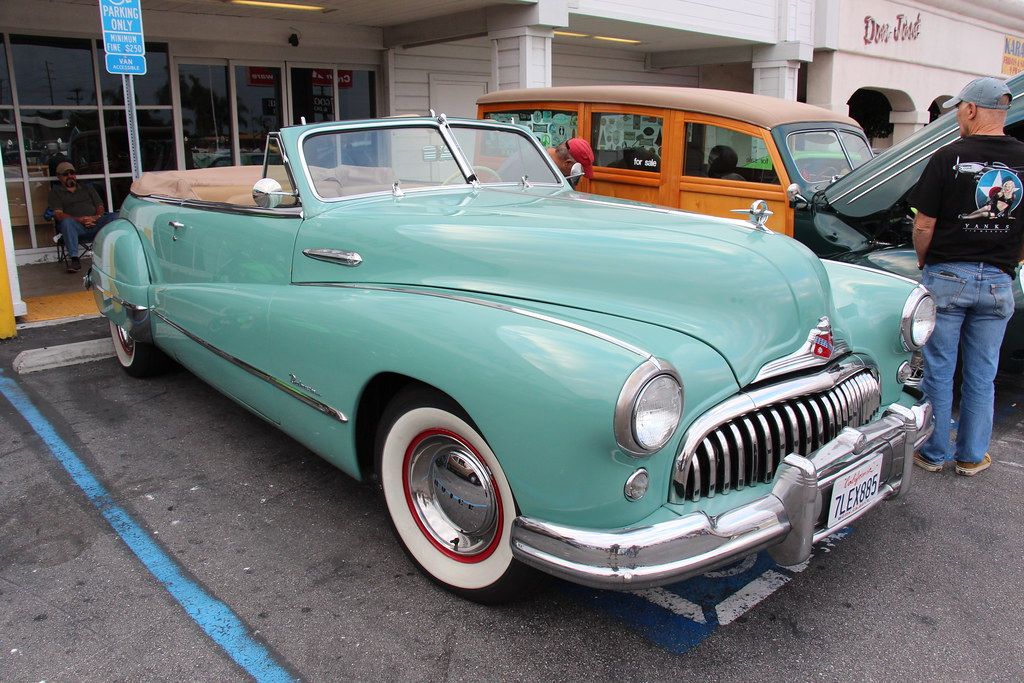
5. **1947 Buick Roadmaster Convertible**The 1947 Buick Roadmaster Convertible truly lived up to its majestic name, delivering a driving experience that was synonymous with pure, unadulterated comfort and presence. This was a grand, smooth cruiser that made occupants feel as though they were effortlessly gliding on a cloud, thanks to its sophisticated suspension. Powering this luxurious ride was a formidable 320 cubic inch straight-eight engine, which produced around 144 horsepower. While not built for blistering speed by modern standards, its purpose was entirely different: it was all about the ride—a smooth, commanding, and utterly comfortable journey.
The Roadmaster’s visual presence was undeniable, characterized by its long, flowing body, broad and imposing grille, and distinctive wraparound bumpers. The convertible versions, in particular, exuded an unmatched sense of open-road swagger and sophistication, inviting passengers to embrace the joy of the journey. These magnificent Buicks continue to make striking appearances at vintage car shows, often looking as fresh and imposing as they did when new, their sheer size and distinctive style making them impossible to overlook.
Indeed, the Roadmaster earned its moniker through its sheer, undeniable presence, enhanced by the distinctive portholes—officially known as “VentiPorts”—on its fenders, which would become a recognizable Buick signature for decades. Its straight-eight engine provided a silky-smooth delivery of power, seemingly limitless in an era when many engines ran much rougher. Inside, the Art Deco dashboard boasted elegant gauge clusters that could easily be considered museum-worthy, cementing the Roadmaster’s status as a statement of success and refined taste, without needing the overt flashiness of a Cadillac.
The initial half of our journey through the automotive icons of the 1940s has revealed how innovation and style persevered even through turbulent times. Now, as we shift gears into the latter part of the decade, we’ll uncover more classics that cemented their legacy not just as functional vehicles, but as enduring symbols of ingenuity and aspirational design. These final five selections continue to tell a compelling story of post-war ambition, showcasing diverse approaches to luxury, practicality, and performance that still captivate onlookers today.
From the quiet sophistication of a luxury cruiser to the surprising elegance of an everyday workhorse, these cars embody the spirit of a transformative era. They are a testament to how designers and engineers, often working with limited resources, managed to craft vehicles that were not only technologically advanced but also aesthetically profound. Prepare to delve deeper into the fascinating world of automobiles that truly refuse to be forgotten, each a rolling sculpture with a story to tell.
Car Model Information: 1995 Buick Roadmaster Estate
Name: Buick Roadmaster
Predecessor: Buick Master Six
Manufacturer: Buick
Production: 1935–1942,1946–1958,1990–1996
ModelYears: 1936–1942,1946–1958,1991–1996
Class: Full-size car
Layout: FR layout
Categories: 1950s cars, 1980s cars, 1990s cars, All articles with unsourced statements, Articles with short description
Summary: The Buick Roadmaster is an automobile built by Buick from 1936 until 1942, from 1946 until 1958, and then again from 1991 until 1996. Roadmasters produced between 1936 and 1958 were built on Buick’s longest non-limousine wheelbase and shared their basic structure with the entry-level Cadillac Series 65, the Buick Limited, and after 1940, the Oldsmobile 98. Between 1946 and 1957, the Roadmaster served as Buick’s flagship.
After being resurrected in 1991, the Roadmaster became the marque’s largest vehicle, measuring 10 in (254 mm) longer with a 5 in (127 mm) greater wheelbase than the C-body Buick Park Avenue. This generation was the first in Roadmaster history to be built on the General Motors B-body platform rather than the C-body, which had traditionally been reserved for GM’s largest and most opulent models that were not Cadillacs.
A Buick Roadmaster Estate station wagon was introduced in 1947 and was manufactured in several generations through 1996. The final run of 1991-1996 Roadmasters shared powertrains and platforms with the Chevrolet Caprice, Cadillac Fleetwood, and Oldsmobile Custom Cruiser.
Get more information about: Buick Roadmaster
Buying a high-performing used car >>>
Brand: Buick Model: Roadmaster
Price: $19,995 Mileage: 93,007 mi.
Read more about: Neil Young’s Car Collection is Wild: 14 Rides From Classic Hearses to Electric Lincolns

6. **1946 Lincoln Continental Coupe**Returning with renewed vigor after the war, the 1946 Lincoln Continental Coupe masterfully preserved the pre-war essence of luxury that its predecessor had established. This was a vehicle designed for the discerning individual, aiming squarely at the upper crust of the market with its promise of a smooth, quiet, and effortlessly elegant ride. Under its long hood, a 292 flathead V12 engine purred, providing approximately 125 horsepower—a figure that underscored its focus on refined performance rather than outright speed.
The design of the Continental was a study in understated sophistication: clean lines flowed seamlessly across its body, complemented by a distinctive long hood and the iconic covered spare tire integrated into the trunk, famously known as the “Continental kit.” Wide whitewall tires completed its upscale appearance, ensuring it looked every bit the part of a high-society cruiser. Even today, its classic proportions and tasteful chrome accents allow it to command respect, proving that some designs truly transcend the fleeting trends of time. There’s an undeniable presence about a classic Lincoln that simply compels people to pause and admire.
Its timeless elegance was so profound that even renowned architect Frank Lloyd Wright, who himself owned one, hailed it as “the most beautiful car ever designed.” This car wasn’t just a means of transport; it was a carefully sculpted statement, exuding a refined luxury that charmed Hollywood’s elite and remains a benchmark for elegant design to this day. The Continental’s enduring appeal lies in this blend of thoughtful engineering and exquisite aesthetics, making it a celebrated piece of automotive artistry.
Car Model Information: 2023 Kia Sorento EX
Name: Lincoln Continental
Caption: 2019 Lincoln Continental
Manufacturer: Lincoln Motor Company
Production: 1939–1942,1946–1948,1956–2002,2016–2020
ModelYears: 1940–1942,1946–1948,1958–1980,1982–2002,2017–2020
Class: Full-size car,luxury car
Layout: Longitudinal engine,Front-engine, rear-wheel-drive layout
Categories: 1930s cars, 1940s cars, 1950s cars, 1960s cars, 1970s cars
Summary: The Lincoln Continental is a series of mid-sized and full-sized luxury cars produced between 1939 and 2020 by Lincoln, a division of the American automaker Ford. The model line was introduced following the construction of a personal vehicle for Edsel Ford, who commissioned a coachbuilt 1939 Lincoln-Zephyr convertible, developed as a vacation vehicle to attract potential Lincoln buyers. In what would give the model line its name, the exterior was designed with European “continental” styling elements, including a rear-mounted spare tire.
In production for over 55 years across nine different decades, Lincoln has produced ten generations of the Continental. Within the Lincoln model line, the Continental has served several roles ranging from its flagship to its base-trim sedan. From 1961 to 1976, Lincoln sold the Continental as its exclusive model line. The model line has also gone on hiatus three times. From 1949 to 1955, the nameplate was briefly retired. In 1981, the Continental was renamed the Lincoln Town Car to accommodate the 1982 seventh-generation Continental. After 2002, the Continental was retired, largely replaced by the Lincoln MKS in 2009; in 2017, the tenth-generation Continental replaced the MKS.
As part of its entry into full-scale production, the first-generation Continental was the progenitor of an entirely new automotive segment, the personal luxury car. Following World War II, the segment evolved into coupes and convertibles larger than sports cars and grand touring cars with an emphasis on features, styling, and comfort over performance and handling. From 1956 to 1957, the Continental nameplate was the namesake of the short-lived Continental Division, marketing the 1956–1957 Continental Mark II as the worldwide flagship of Ford Motor Company; as a second successor, Ford introduced the Continental Mark series in 1969, produced over six generations to 1998.
Along with the creation of the personal luxury car segment, the Lincoln Continental marked the zenith of several designs in American automotive history. The Continental is the final American vehicle line with a factory-produced V12 engine (1948), the final four-door convertible (1967), and the final model line to undergo downsizing (for the 1980 model year).
American production of the Continental and MKZ, its only two sedans, ended in 2020 thereby making Lincoln a crossover/SUV-only brand in the US.
Get more information about: Lincoln Continental
Buying a high-performing used car >>>
Brand: Lincoln Model: Continental Coupe
Price: $28,876 Mileage: 51,510 mi.
Read more about: The 19 Greatest American Cars That Defined an Era
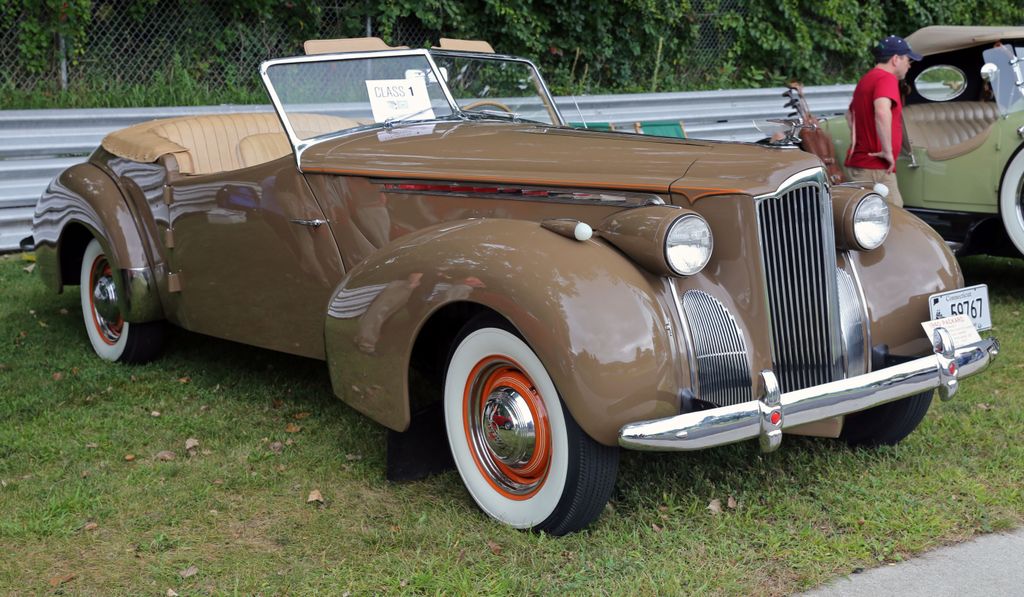
7. **1940 Packard One-Twenty Convertible**Packard, a marque synonymous with excellence, truly understood how to craft a vehicle that exuded gravitas, and the 1940 One-Twenty Convertible stood as a proud testament to that legacy. This car possessed a formidable stance and graceful curves, immediately conveying a sense of serious automotive presence. Powering this elegant machine was a 282 cubic inch inline-eight engine, producing a robust 120 horsepower, paired with a column-shifted manual transmission—a sophisticated setup for its era.
While it wasn’t engineered for racing prowess, the One-Twenty was undeniably built to be seen. Its distinguished features, including a beautifully long hood, an upright grille, and smoothly arched fenders, lent it a formal, almost stately appearance that remains striking. Even now, a meticulously maintained One-Twenty, with its top gloriously folded down, effortlessly draws admiring glances wherever it gracefully rolls, a true magnet for attention at any classic car gathering.
The company’s famous slogan, “Ask the man who owns one,” perfectly encapsulated Packard’s hard-earned reputation for quality and distinction. The One-Twenty, in particular, was instrumental in bringing Packard’s renowned luxury to the upper-middle class without diluting the brand’s prestigious image. Its distinctive ox-yoke grille and the elegant Flying Goddess hood ornament proudly announced an owner’s arrival into a world of automotive aristocracy. Inside, the cabin boasted rich wool broadcloth upholstery and genuine wood trim, materials that have aged beautifully, testifying to the meticulous craftsmanship. Packard’s straight-eight engine was renowned for its silken smoothness; indeed, dealers were known to demonstrate this by balancing nickels on edge atop the running motor—a testament to its engineering precision. Though positioned as a more accessible model than the senior Packards, the One-Twenty uncompromisingly upheld the build quality that cemented these cars as legends, explaining why many examples survived, cherished by their original owners.
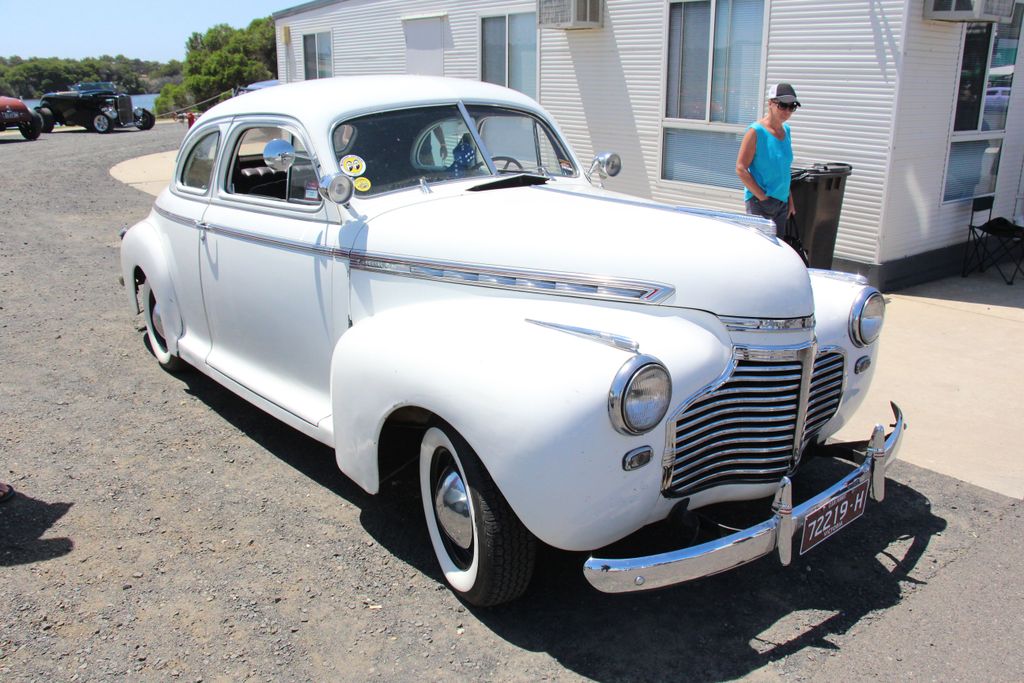
8. **1941 Chevrolet Special Deluxe**The 1941 Chevrolet Special Deluxe represented a pivotal moment in Chevy’s design evolution, marking a clear turning point towards more modern aesthetics. Beneath its hood, a 216 cubic inch inline-six engine churned out approximately 90 horsepower, making it a reliable and capable everyday car for its time. However, it was the Special Deluxe’s body that truly captured people’s attention first, signaling a fresh direction for the brand.
This model featured more expansive, wider fenders and a noticeably more rounded shape compared to its predecessors, contributing to a fluid, contemporary silhouette. The interior, too, felt more complete and thoughtfully appointed, enhancing the overall driving experience. The fastback models of the Special Deluxe, in particular, continue to command attention with their elegantly sloped roofs and smooth rear quarters, showcasing a design sophistication that was ahead of its curve. Finding clean, original examples of these cars is increasingly rare today, which only adds to their allure and ensures they always earn a second, admiring glance from enthusiasts.
The aerodynamic fastback profile of the Special Deluxe made it Chevrolet’s undisputed style leader of the era. Its balanced proportions and restrained use of chrome have allowed its design to age remarkably well, appearing refined and modern even decades later when compared to more traditional, three-box car designs. This sleek aesthetic and its inherent versatility, available in both two-door and four-door variants, made it a popular choice for families and a desirable vehicle in the post-war demand when buyers sometimes paid over sticker price just to acquire one. Its practical approach to luxury, with simple gauges and durable upholstery, along with its natural grace, led to it being embraced by various communities, further cementing its place in automotive history.
Car Model Information: 2023 Kia Sorento EX
Manufacturer: Chevrolet
Caption: 1949 Chevrolet Styleline De Luxe 4-Door Sedan
Production: unbulletedlist
Assembly: unbulletedlist
BodyStyle: unbulletedlist
Layout: FR layout
Aka: unbulletedlist
Platform: GM A platform (1936)
Related: unbulletedlist
Successor: unbulletedlist
Predecessor: Chevrolet Master
Engine: 216 cuin
Abbr: Overhead valve engine,Chevrolet Stovebolt engine
Transmission: unbulletedlist
Length: unbulletedlist
Wheelbase: cvt
Categories: 1950s cars, Articles with short description, Cars discontinued in 1955, Cars introduced in 1941, Chevrolet vehicles
Summary: The Chevrolet Deluxe is a trim line of Chevrolet automobiles that was marketed from 1941 to 1952, and was the volume sales leader for the market during the 1940s. The line included at first a 4-door sedan, but grew to include a fastback 2-door “aerosedan” and other body styles. The 1941 Chevrolet was the first generation that didn’t share a common appearance with Chevrolet trucks, while the Chevrolet AK Series truck did share common internal components.
It was with this generation that all GM vehicles experienced increased width dimensions to accommodate three passengers on the front bench seat and an additional three passengers on rear bench seat installed vehicles. This was accomplished with the deletion of running board thereby adding additional room inside the passenger compartment.
The original series ran from 1941 to 1948, after which a new body style was introduced for 1949, running through 1952. During the post-war years and continuing through the early 1950s, the Deluxe range was Chevrolet’s sales leader, offering a balance of style and luxury appointments unavailable in the base Special series; and a wider range of body styles, including a convertible, Sport Coupe hardtop (starting in 1950), two- and four-door sedans and four-door station wagons.
Get more information about: Chevrolet Deluxe
Buying a high-performing used car >>>
Brand: Chevrolet Model: Special Deluxe
Price: $28,876 Mileage: 51,510 mi.
Read more about: Neil Young’s Car Collection is Wild: 14 Rides From Classic Hearses to Electric Lincolns
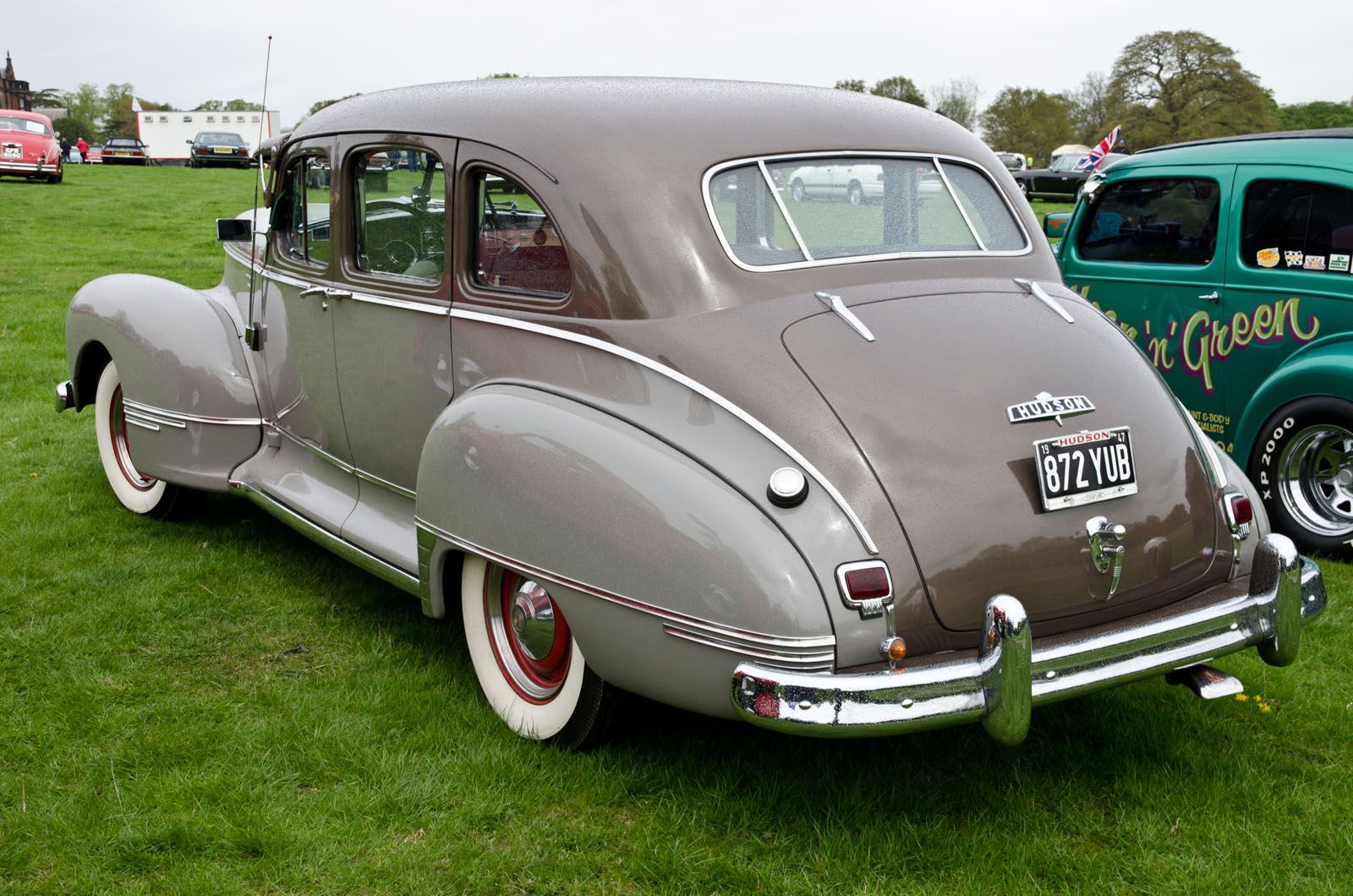
9. **1940 Hudson Commodore**While perhaps not the most prominent name in the automotive pantheon, the 1940 Hudson Commodore emerged as a formidable contender in its class, demonstrating that innovation and distinctiveness weren’t exclusive to the biggest manufacturers. This car boasted sleek lines and a wide, assertive stance, immediately setting it apart. Powering it was a 254 cubic inch straight-eight engine, delivering a respectable 128 horsepower—a strong showing for its day.
What truly distinguished the Commodore, however, was its groundbreaking engineering, particularly its ‘step-down’ floor design. This innovative construction method provided a lower center of gravity, which not only improved handling dramatically but also gave the car a uniquely different and appealing look compared to many of its contemporaries. Hudson specifically designed the Commodore with comfort in mind, ensuring a refined ride. Yet, its purposeful design carried an abundance of style that still resonates with admirers today. It’s a car that isn’t seen every day, and that rarity only amplifies the appreciation when one does make an appearance, marking it as a truly special classic.
The Hudson Commodore subtly showcased the brand’s forward-thinking approach, retaining some pre-war styling cues while integrating advanced engineering that was years ahead of many competitors. Its straight-eight engine provided smooth and capable power, contributing to its reputation as one of the better-handling full-size cars of its time. The blend of comfort, distinctive design, and surprisingly advanced underpinnings makes the 1940 Hudson Commodore a fascinating and enduring classic. It represents a period when carmakers dared to experiment, creating vehicles that were both practical for the era and possessed an unmistakable, lasting allure.
Read more about: Revolutionary Rides: The 1930s Cars That Changed Driving Forever

10. **1949 Oldsmobile 98**The 1949 Oldsmobile 98 underwent a comprehensive redesign, emerging as one of the pioneering vehicles to feature General Motors’ distinctive new post-war styling. This fresh aesthetic immediately set it apart in the burgeoning automotive market. But it wasn’t just its sleek, modern lines that captured attention; the Oldsmobile 98 also housed a significant innovation under its hood: the new 303 Rocket V8 engine, which generated an impressive 135 horsepower. This robust engine helped the 98 stand out dramatically in a market still largely populated by vehicles relying on less powerful inline-sixes.
The car presented a commanding presence with its low, wide stance, accented by just the right amount of chrome that hinted at its underlying power without being overtly flashy. The “Rocket” badge prominently displayed on its hood was more than a mere decoration; it was a clear declaration that this vehicle possessed genuine muscle for its era, promising performance that belied its luxurious appearance. This potent combination of imposing size and formidable power ensures that the 1949 Oldsmobile 98 continues to hold its own, drawing admiration and respect at any classic car meet or show.
The 1949 Oldsmobile 98, with its blend of groundbreaking design and the revolutionary Rocket V8, truly signaled a new direction for American automobiles. It was a vehicle that embraced the optimism and technological advancements of the post-war period, delivering both comfort and a thrilling driving experience. Its enduring appeal lies in this harmonious marriage of forward-thinking styling and potent, innovative engineering, solidifying its place as a celebrated icon that continues to turn heads and remind us of a vibrant era in automotive history.
Car Model Information: 1952 Oldsmobile 98 Base
Name: Oldsmobile 98
Caption: 1964 Oldsmobile Ninety-Eight Holiday hardtop coupe
Manufacturer: Oldsmobile
Aka: Oldsmobile Custom Cruiser 98,Oldsmobile 98 (1948–1951),Oldsmobile Ninety-Eight (1952–1956, 1958–1960, 1962–1991),Oldsmobile Starfire 98 (1957),Oldsmobile Classic 98 (1961 only),Oldsmobile Ninety Eight (1992–1996)
Production: 1940–1942,1946–1996
Layout: Front-engine, rear-wheel-drive layout
Class: Luxury vehicle#High-end luxury/full-size luxury cars
Predecessor: Oldsmobile L-Series
Successor: Oldsmobile Aurora
Categories: 1940s cars, 1950s cars, 1960s cars, 1970s cars, 1980s cars
Summary: The Oldsmobile 98 (spelled Ninety-Eight from 1952 to 1991, and Ninety Eight from 1992 to 1996) is the full-size flagship model of Oldsmobile that was produced from 1940 until 1942, and then from 1946 to 1996. The name – reflecting a “Series 90” fitted with an 8-cylinder engine – first appeared in 1941 and was used again after American consumer automobile production resumed post-World War II. It was, as it would remain, the division’s top-of-the-line model, with lesser Oldsmobiles having lower numbers such as the A-body 66 and 68, and the B-body 76 and 78. The Series 60 was retired in 1949, the same year the Oldsmobile 78 was replaced by the 88. The Oldsmobile 76 was retired after 1950. This left the two remaining number-names to carry on into the 1990s as the bread and butter of the full-size Oldsmobile lineup until the Eighty Eight-based Regency replaced the 98 in 1997.
Occasionally additional nomenclature was used with the name, such as L/S and Holiday, and the 98 Regency badge would become increasingly common in the later years of the model. The 98 shared its General Motors C-body platform with Buick and Cadillac.
Since it was the top-line Oldsmobile, the series had the most technologically advanced items available, such as the Hydramatic automatic transmission, the Autronic Eye, an automatic headlight dimmer, and Twilight Sentinel (a feature that automatically turned the headlights on and off via a light sensor and a delay timer, as controlled by the driver), and the highest-grade interior and exterior trim.
Get more information about: Oldsmobile 98
Buying a high-performing used car >>>
Brand: Oldsmobile Model: 98
Price: $64,900 Mileage: 46,796 mi.
Read more about: The End of the Road: 17 Unforgettable Cars That Were Discontinued
The 1940s may have been a decade of immense challenges and profound shifts, but the vehicles that emerged from this period tell a compelling story of resilience, creativity, and unyielding ambition. From the revolutionary features of the Tucker 48 to the sophisticated grandeur of the Lincoln Continental, and the innovative spirit of the Hudson Commodore, each car we’ve explored is more than just a piece of engineering; it’s a rolling testament to a time when designers and engineers, despite formidable constraints, dared to push boundaries. These aren’t mere relics of the past; they are vibrant reminders of automotive artistry and ingenuity that continue to inspire and captivate, proving that true automotive brilliance, indeed, remains timeless.

